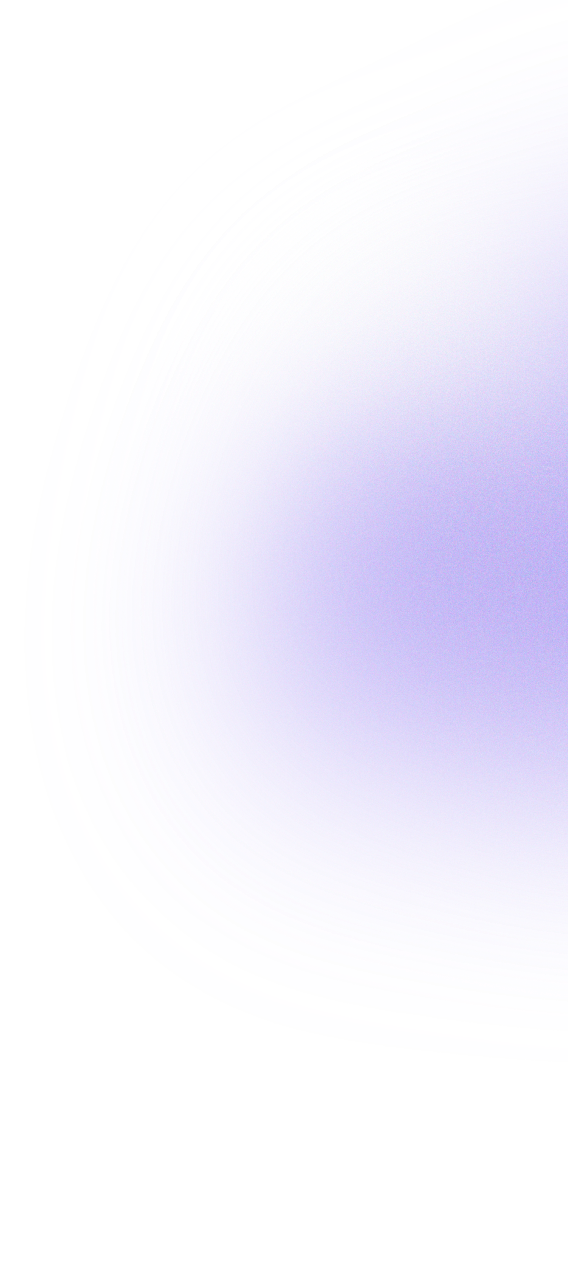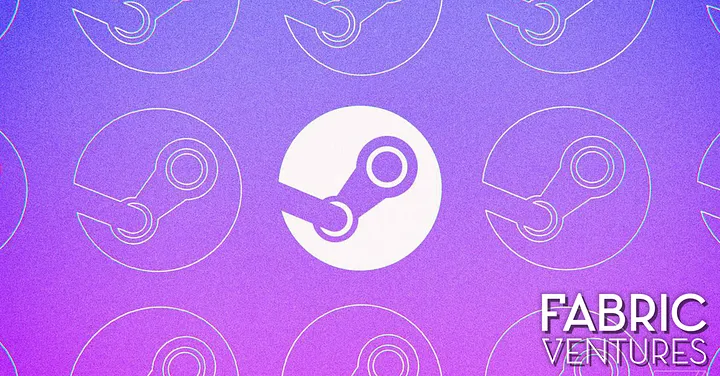By Ian Emerson, Investment Team.
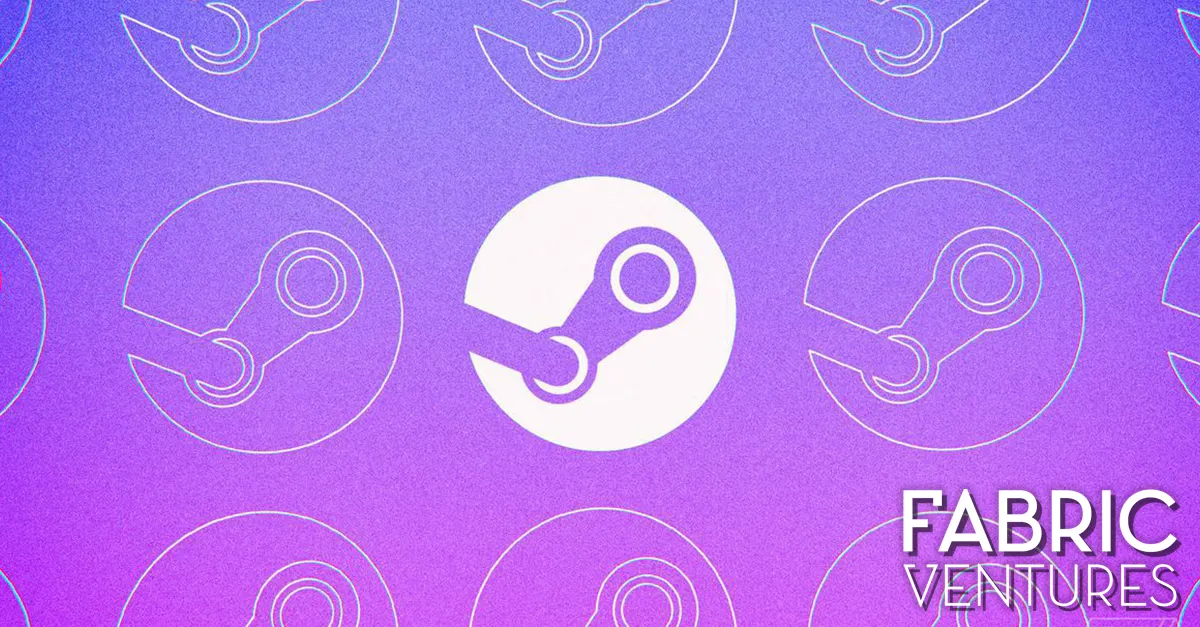
There are many ways to skin a cat, and there are many ways to view the web3 gaming stack. Having spoken to 10s of founders, thought leaders, and investors on the topic in the last month alone, I will describe here one perspective from which we can start to wonder:
What might the Steam of Web3 look like?
What follows is not meant to be an exhaustive list of projects (if it is still possible to keep up with them all), nor a definitive framework. Just my 2 cents.
For some context, see previous pieces we have written on why we invested in Immutable, Sorare, Sky Mavis, & Concept Art House.
• • • • •
Firstly, why is Steam so important? And why have I accrued many thousands of hours of game time on it? Well it provides two key things:
- Game distribution
- Social engagement
Games are distributed through Steam’s games store, seasonal sales, incubation program (Steam Greenlight), and importantly The Library from which you can access all of your games. The Library ensures you keep coming back to Steam, even if you purchase games elsewhere you can launch them from Steam to benefit from:
Social engagement, achieved through its communications tools, chat, the Steam in-game overlay, profiles, friends, groups, achievements, badges, and your inventory of in-game items from the games you play.
In short, Steam is a single unifying platform to find games, manage your digital assets, connect with friends, and show off to the world.
The flaws of web2 in providing these services is perfectly exemplified by Valve’s centralised decision to shun web3 by banning all token-related games on Steam. It continues to hold true that you either die a hero in web2 or live long enough to see yourself become the villain in web3.
The question of replacing these functions thus boils down to: How can we incentivise game distribution and social engagement?
But before we get there, let’s think of the web3 gaming stack as a technical one:
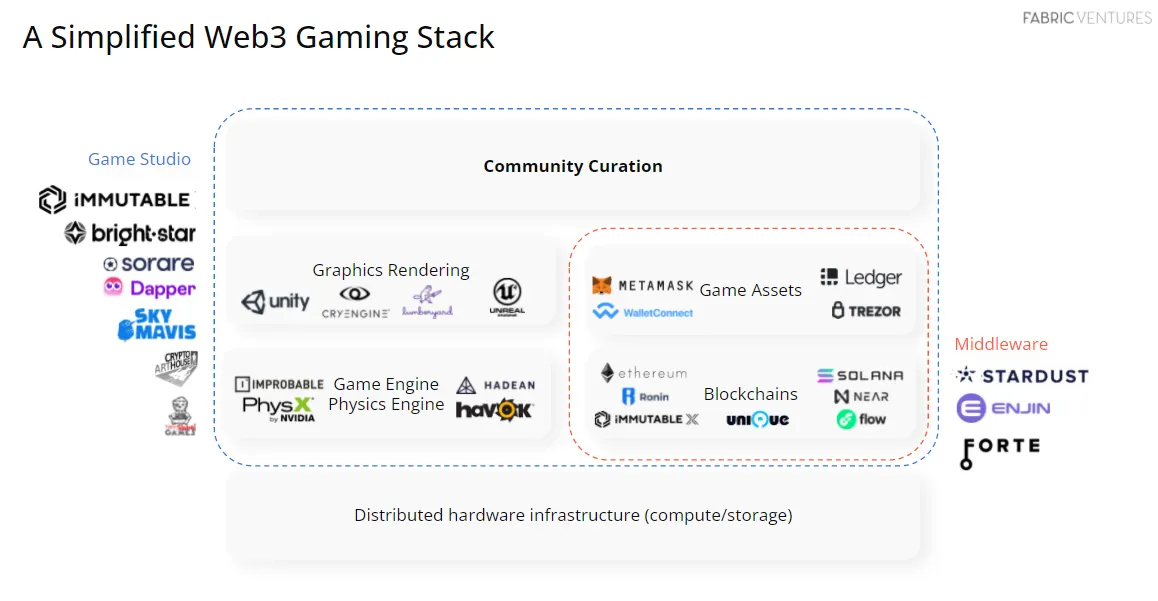
In a simplistic way, game studios operate across the stack using various tools at different layers. Any one of these warrants a post of its own, but running through them quickly we have:
- Middleware to obfuscate blockchains (where assets live) and wallets (where assets are managed).
- Engines to handle particles and game mechanics then render the outcome for players to experience.
- This is all running at the bottom on hopefully distributed hardware *cough* AWS.
- At the top it is tied together by community.
Within this model, Game distribution and Social engagement are handled by the community layer, which we can split further into:
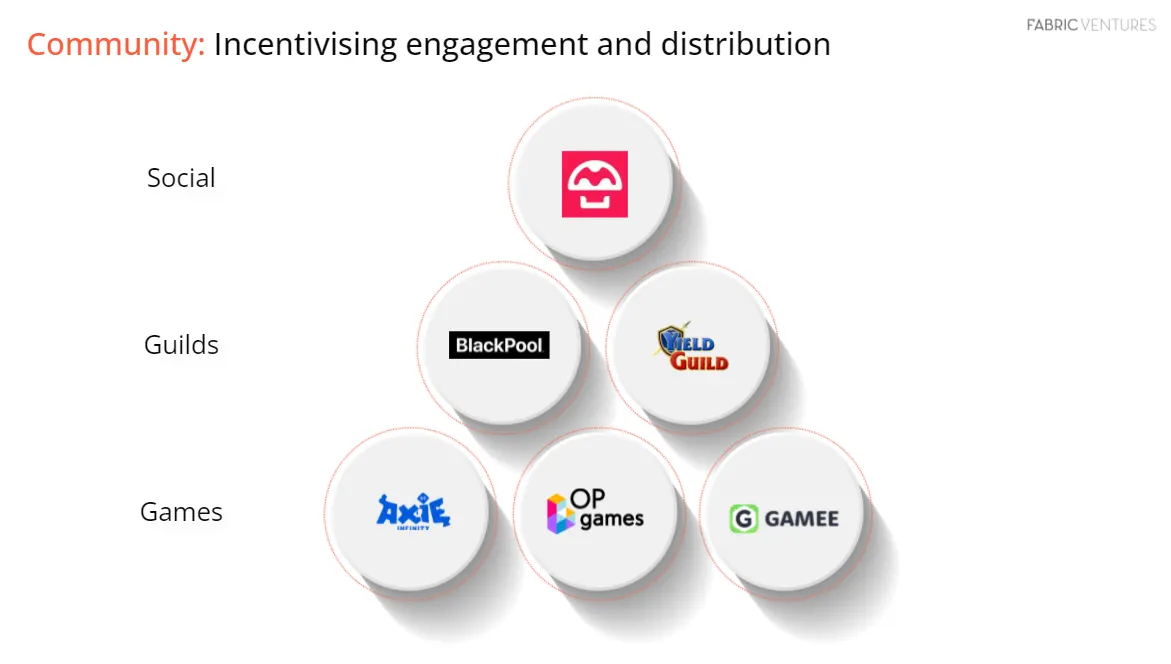
Let’s tackle the games first:
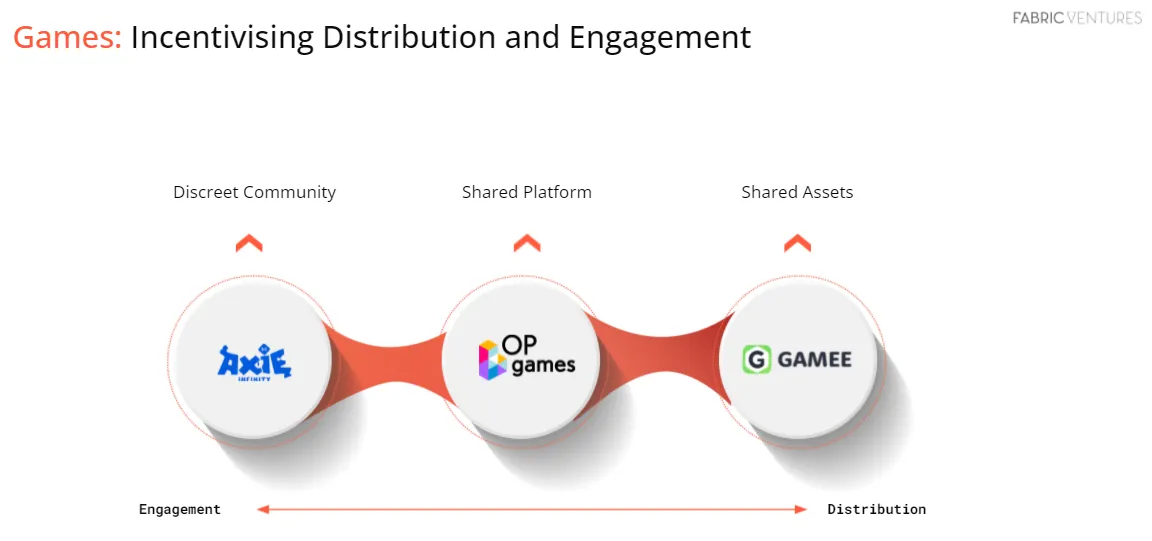
From left to right on this axis is increasing attachment for a community member to an individual project (engagement). From right to left is increasing cross-pollination of community between projects (distribution).
Discreet Communities
Every game has a community attached to it. And in web3, every game has assets that give community members financial exposure. In many cases this community is siloed to just that game i.e. any assets (NFTs, Governance Tokens, Resource Tokens) you have within that game only give you exposure to that game. For now, Axies are used only within Axie Infinity and AXS governs just the Axie Infinity ecosystem. Of course these assets can be used elsewhere, at the impulse of the community building derivatives or its developer, Sky Mavis, layering further functionality, but these can all be considered for now as part of the same community.
E.g. Axie, Embersword, Illuvium, Star Atlas…
The challenges these communities face are:
- Competing with other games for greater yield.
- Finding sustainable economic loops that likely require active management.
- High quality game development is time and resource intensive.
- Scaling coordination of the community as it grows.
Conclusion: there is no direct incentive for cross-pollination, but community members are strongly incentivised to support that game.
Shared Platform
While discreet, the games may feature on a platform that links it to other games. In this way its players also see other games, or may even interact with other communities through a metagame, even if they are not directly financially exposed to them.
E.g. OPGames
For OPGames, each game on the arcade has IP represented by an NFT. This NFT can be fractionalised into a governance token and distributed to its community, providing financial exposure to that individual game.
Challenges:
- Community curation within each game is difficult to scale
- Requires at least a few high quality games, likely exclusive to the platform
Conclusion: community members are incentivised to support their favourite games and may also discover other games.
Shared Assets
Beyond just sharing a platform, games can have interoperable assets (many game platforms and game studios are attempting this):
Games that leverage the same NFT to provide utility in different games:
E.g. Trailblazer, MTVRS, Capscoin
Games that use the same resource or governance token:
An access gating token to allow play or enable play-to-earn functionality (Arcade):
The easiest way to bring assets across games is for one game studio to develop all the games. This makes it relatively simple to manage how the same NFT can have utility in two separate games, as the game engines interpret it differently. Similarly it is much easier to control the economic loops of resource and governance tokens when you have access to all the levers that affect them (rewards, supply sinks, staking incentives).
Challenges:
- Splitting economic design across multiple games multiplies the complexity.
- Cross-game interoperability unclear.
- Requires publishing multiple good games.
Conclusion: gamers are somewhat incentivised to support their favourite games, but also exposed directly to others.
• • • • •
On top of the games there are economics actors known as guilds:
Guilds
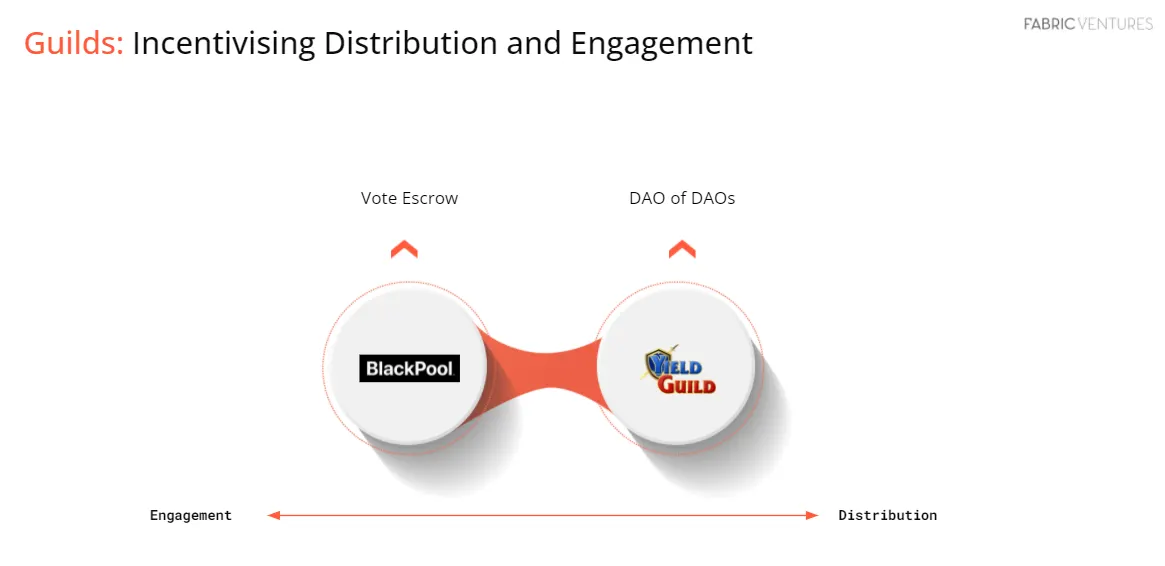
Guilds conduct an arbitrage between time poor asset owners (guilds and investors) who cannot generate yield and time rich scholars who do not have the capital to purchase assets. The scholars are lent assets to generate yield, from which the asset owner (and in some cases a facilitator i.e. guild on behalf of investor) can take a cut. See Delphi’s Dawn Of The Guilds: Settlers Of The Metaverse for a deep analysis.
DAOs like Yield Guild Games have an umbrella token (YGG) governing a treasury that has exposure to subDAOs. The subDAO tokens (e.g. YGGLOK) govern subDAO treasuries. All YGG community members are exposed to all subDAOs, but they can choose to get greater exposure into specific subDAOs. This results in a balance between cross-pollination (distribution) and incentivisation (engagement) for specific subDAOs.
As an aside, you can imagine one might end up with a lot of tokens in the guild of guild model, hence an alternative approach is the vote escrow model popularised by Curve (veCRV). By locking up tokens in one vertical for set periods (longer = more voting power), holders receive a higher proportion of the yield for that vertical e.g. Sorare rather than Axie.
• • • • •
Social Graph / Community tooling
These platforms do not host games, but host content and/or build a social graph between gamers and provide digital identities that can cross games, e.g. a social feed for content relating to many games, wherein users are incentivised with reward tokens to engage with each other, which they can subsequently spend on their digital identity (badges, cosmetics, social clout), which they can flex in the social feed… and so on.
E.g. Crucible, Mushroom, Medal, Fruitlab, Banger games
Conclusion: These provide perhaps the best distribution of games through social feeds and clips, however though there is engagement in the social feed with other gamers and even through questing mechanisms with specific games, there is nowhere near the same financial incentivisation as in previous categories.
• • • • •
So where does that leave us with respect to the original question?: What might the Steam of Web3 look like?
- For each gaming blockchain e.g. Immutable X, Ronin, we have something that resembles features of Steam i.e. Immutable Marketplace, MavisHub, but these are ecosystem specific and cannot be chain-agnostic or unbiased. Engagement, but limited Distribution.
- Similarly large game studios can have their own Hub (if not their own blockchain), but these focus mostly on their own games rather than attracting 3rd party developers (the downfall of web2 Steam competitors e.g. Origin for EA titles). Engagement, but limited Distribution.
- Middleware providers who provide custody solutions and plug into multiple blockchains may be able to own user journeys, but introduce a centralised element to wallets and are far from building a social graph. Distribution, but limited Engagement.
- Guilds give guild members a lot of financial incentive to participate and discover new games as those assets are added to the balance sheet. They are also key distributors, as they can quickly tap into a large pool of players, but are not the hub for launching games nor an aggregator of every game a user may want to play. Some Distribution and some Engagement.
- The social layer can capture content from any game, but lives parallel to the game, rather than being the game launcher. Distribution, but limited Engagement.
So it seems likely that at least in the short term the functions of Game distribution and user engagement that Steam provides may be fragmented across multiple layers of the stack or may be fully fulfilled, but only in a centralised manner on a per-ecosystem basis.
Have I missed something? Do you disagree with my framing? Ping me a note and let’s have a chat!: ian@fabric.vc

